July 2023
This month we are going to look at some new photos (donated by Pam Murray neé Low) relating to her father George Low & Son’s business.
Low’s shop was at 67 High Street, Dunbar and the shop is presently occupied by Bowe Sports. The shop goes back to the 1920s and you can see a photo of the shop from this period on the DDHS website here. The photo below shows the entrance to the Dunbar shop – there was also one in North Berwick – in the 1960s. If you enlarge the photo, you will see the type of furniture that was in fashion at this time – the comfortable looking armchairs, the tall cabinets, the TV stand with space underneath e.g. for a record player, as well as glass fronted cabinets in which people displayed ornaments or glasses. There are also round and oblong coffee tables, nests of small tables and, just above the handle of the right hand door, you will see a red telephone, sitting on the edge of a tall cabinet. Only a minority of people had telephones in their houses at this time, so this inclusion was to attract more affluent customers.
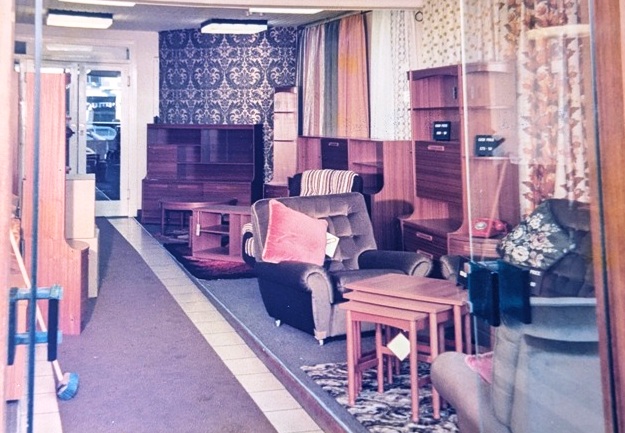
In the 1950s, 1960s and for part of the 1970s, upholstery was part of the business, employing highly skilled craftsmen such as Harry Martin and Walter Munro. The photo below shows Harry Martin recovering a chair. The second photo shows a set of chairs which had been repaired. In his book Dunbar in the 1950s, Jim Herring quotes the late Jimmy Cameron, a salesman in the shop, stating “Harry or Walter would strip the chair and take out the special nails which fixed the cloth to the chair, recover it with new nails and it would look like a new chair after that. It was a highly skilled job and only those people who had the money could afford it, as it was very expensive”. Also in the book, Pam Murray comments “You can see why upholstery was expensive, as Harry or Walter might spend a whole day doing someone’s chair, as it was a slow and very precise business”. Nowadays, upholstery is a very specialised craft and offered only by a few businesses, whereas in the 1950s and 1960s, many furniture firms like Low’s offered this service.
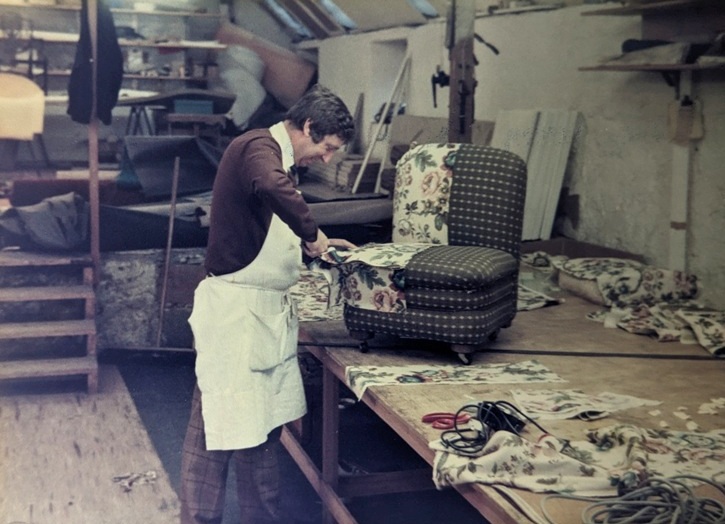
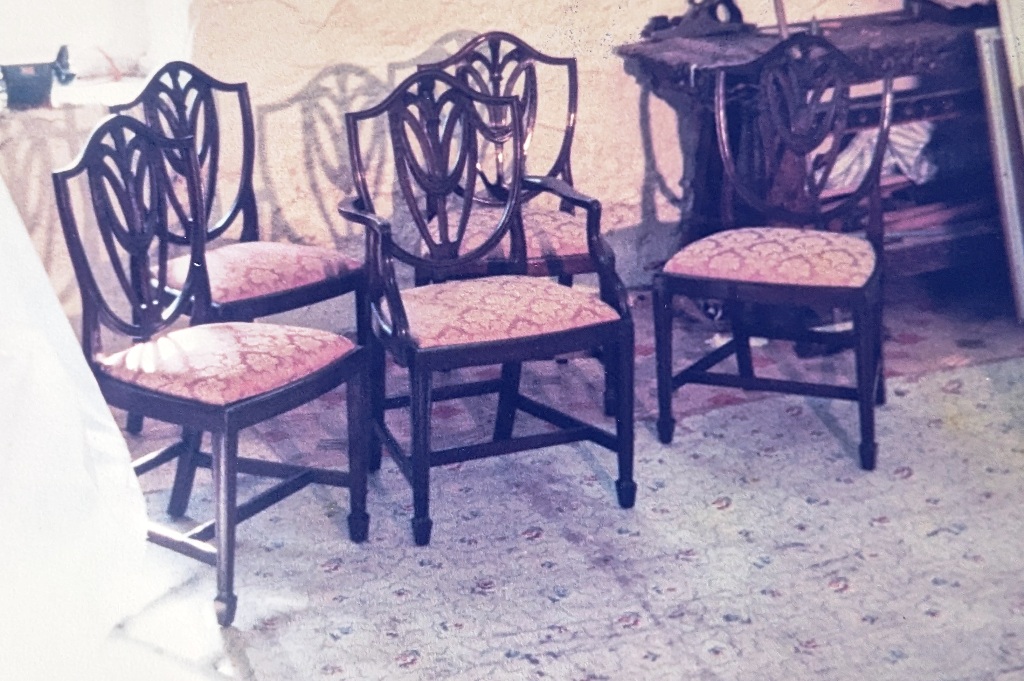
One of the best known aspects of Low’s business in Dunbar in the 1950s and 1960s, was the auction that was held in the Assembly Rooms in Church Street 3 or 4 times a year. The first photo below shows Harvey Thomson, who worked for G Low outside the Assembly rooms in the 1960s. Jimmy Cameron recalled “It was a day out for people and the place was packed. Not everybody went to buy – they went to meet people and enjoy it”. Christine Barber was a regular attendee at the auctions and remembered “You were there for the day, so you took a flask of tea and sandwiches – lots of people did that”. The auctions were social occasions but also a chance for working class people to buy goods such as carpets – second hand but always in good condition – which they could not afford to buy new. The 2nd photo – from The Haddingtonshire Courier of 27 October 1950 – shows an advert for an Assembly Rooms auction. The enlarged photo shows that amongst the items for sale were column chest drawers which may have looked like the one on display here. Also listed is chiffonier which the Oxford Language dictionary defines as “1. BRITISH a low cupboard either used as a sideboard or with a raised bookshelf on top. 2. NORTH AMERICAN a tall chest of drawers”. A surprising item may be the beehive which follows the metal garden seat and precedes the modern gas cooker. So an auction would contain a wide variety of items for customers.
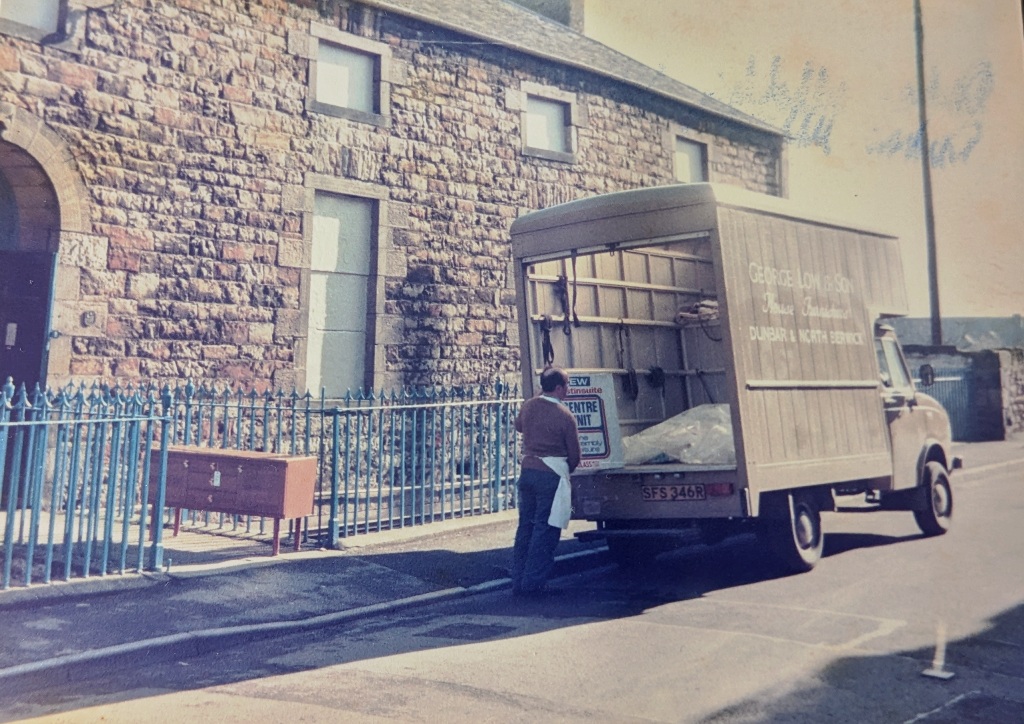
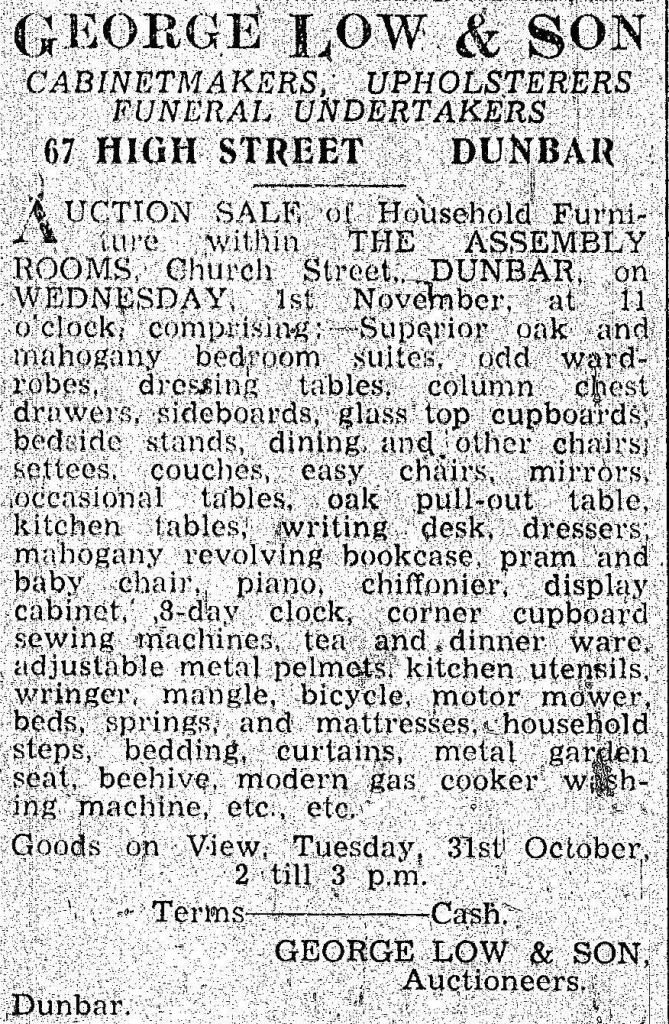
You must be logged in to post a comment.